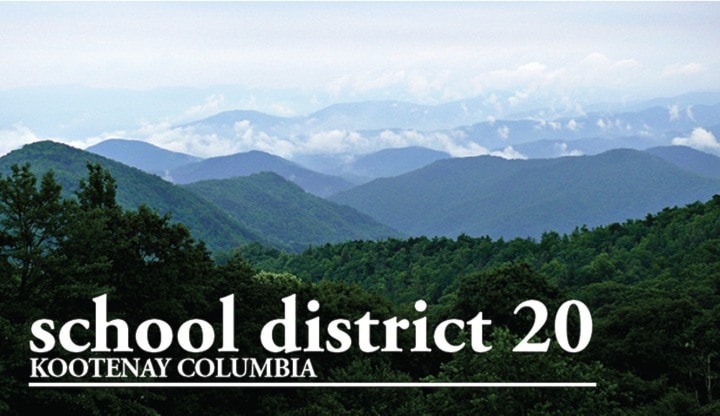The decision to pull the plug on Rossland Secondary School last year has put the school district into a deficit position for next year, says the district’s chair.
Darrell Ganzert said School District 20’s preliminary budget shows a deficit of $729,540 largely due to a decrease in funding from the Ministry of Education and an increase in CUPE wages not covered by the province ($240,000).
That decrease in funding comes from an enrolment drop of around 100 students, many of them the result of not gaining the full amount of students from Rossland than was expected when RSS was closed as a secondary school facility, said Ganzert.
The district lost at least 36 students to Seven Summits Centre for Learning this year, some to home schooling, and possibly to other schools.
Although the district knew it would be down that many students in September, Ganzert said, they didn’t anticipate that many last school year.
“There is no question about it, it certainly was,” he said about the “Rossland effect” of the creation of an independent school. “We hope that now we are now stable, but we won’t know that until of September.”
As a result, he said up to 4.5 full-time-equivalent teacher positions will be cut across the district to deal with the funding reduction. He said those positions could be lost through attrition.
To help deal with the deficit, school district staff compiled a “long list” of ideas to balance the budget. The list was released March 11 along with a survey seeking public input.
One of the proposals is to charge for bussing. Free bussing of students from Rossland to Trail was a selling point in convincing parents of the merit of sending secondary students down the hill.
The district could charge $50 to $100 per student each year for bussing, or eliminate all bussing and provide $35 per month per child to those who are outside walk limits (a savings of $375,294).
“If you are speaking of charging kids for bussing, that’s district wide,” and not just for Rossland, said Ganzert. “I don’t think trustees want to go in that direction, but some districts have.”
Other proposals for cuts that could affect Rossland include:
• reduce Rossland clerical to be consistent with schools of a similar size and configuration;
• eliminate elementary teacher‐librarians (Rossland reduces from 0.5 to 0.2 fte);
• eliminate library assistants in all schools;
• eliminate school iPads/laptops/secondary lab replacements.
The list is to educate the public, said Ganzert, to show them what are some of the things the school district could be forced to do.
“But these are proposals,” said Ganzert. “In the end we are going to resolve the budget issues without much of an impact on the general public that way. What will be coming is studying the long list and deciding what things we are serious about.”
The list is far reaching, said Greg Luterbach, superintendent of schools, in an email that accompanied the budget adjustment list.
“We also are very sensitive to the fact that many of the items on the list may impact our employees' livelihoods.”
The long list includes the reduction of up to five teachers to match the 3,786 students anticipated next school year, down from a previous enrolment of 3,915 students.
The final budget must be submitted by the end of April.
The public is invited to view the draft budget and fill out a survey on SD20's website (www.sd20.bc.ca) or speak directly to a trustee. A presentation of the proposed balanced budget will be held April 16 at 6:30 p.m. at the Kootenay-Columbia Learning Centre (KCLC), the Trail campus formally known as the Trail Middle School.
